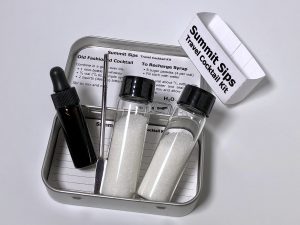
How to make Tonic Water
 We were never a Gin & Tonic fan, but all of that changed last year when we read Jeffrey Morgenthaler’s post about making tonic from scratch. Of course, his wasn’t the first recipe to gain widespread attention. The resurgence of craft tonic is credited to Kevin Ludwig of Portland, Oregon whose recipe even appeared in the March/April 2007 issue of Imbibe Magazine. Having basically skipped over that recipe back then, we considered it an ingredient best left to gin drinkers, or someone who was more interested. Finally, after reading more about it and seeing craft tonic added to a cocktail we really enjoyed, we decided to give it a try.
We were never a Gin & Tonic fan, but all of that changed last year when we read Jeffrey Morgenthaler’s post about making tonic from scratch. Of course, his wasn’t the first recipe to gain widespread attention. The resurgence of craft tonic is credited to Kevin Ludwig of Portland, Oregon whose recipe even appeared in the March/April 2007 issue of Imbibe Magazine. Having basically skipped over that recipe back then, we considered it an ingredient best left to gin drinkers, or someone who was more interested. Finally, after reading more about it and seeing craft tonic added to a cocktail we really enjoyed, we decided to give it a try.
Why make something that already exists?
When we first saw the Imbibe article, we were asking all sorts of questions. Can’t you simply buy tonic water at the store? It’s cheap enough, it’s crystal clear, and it’s essentially a commodity product–right? Where can you really go with something so basic? Well, it turns out that the tonic water available today is truly a different product than it was originally. Commercial tonic is little more than bitter soda water, completely devoid of other flavor characteristics. We soon realized that making your own tonic isn’t about reproducing what is on the shelf already, but rather exploring cocktail history to create something refreshing, natural and delicious. We found that the Gin & Tonic can be transformed, or rather, revived. We still don’t order them at most bars, but now we most definitely make them at home!
The Bitter Truth About Tonic Water
Think about the name, tonic, for a moment and you conjure up images of old-time pharmacies or even bearded swindlers selling bottles of secret sauce as a medicinal cure-all. Actually, this is not far from the truth. The defining ingredient in tonic, besides water, is quinine. Quinine imparts the familiar bitter flavor in commercial tonic water, and although these days it’s added in a pure chemical form as a flavor component, this was not always the case.
Quinine is a natural alkaloid with true medicinal properties. It’s available over the counter by prescription in the US or in small quantities in tonic water. It is extracted from the bark of the cinchona plant, a small tree native to South America. Cinchona bark, long used by Peruvian natives as a muscle relaxant, is effective in the treatment and prevention of malaria and other afflictions. The locals would grind the bark into a powder and combine it with sweetened water to offset the bitter flavor—thus creating the world’s first tonic water. It has been used by Europeans since at least the early 1600’s as a cure for malaria and the bitterness eventually led British colonials in India to combine it with gin to offset the taste, creating the Gin & Tonic cocktail.
Although the sale of quinine is regulated by the FDA, cinchona bark is sometimes available at health food and nutrition stores. Our interest here is not to extract a drug for home remedies, but to reproduce the bitter flavor that would have been present in a traditional tonic—the original ingredient that drove the Gin & Tonic to become such a popular cocktail. We can’t imagine the G&T in its current state rising alone to the prominent “goto” status it seems to enjoy. Something must have changed over the years, and it’s not the gin. We find it ironic that what started historically as a way to improve the consumption of tonic has evolved into a combination to soften the flavor of gin. Certainly, tradition has had a lot to do with its popularity, but gin drinkers (and haters) everywhere are completely missing out on everything good that is possible with a craft Gin & Tonic.
 The Method
The Method
Homemade tonic water is a carbonated beverage consisting of a concentrated tonic syrup and soda water. These components are combined at the time you mix a drink, so there’s no need to store bottles of carbonated tonic. We use a soda siphon to add the carbonated water, but you can also use a bottle of sparkling mineral water or club soda. The focus of the recipe is the syrup. It starts with gathering your ingredients.
The hardest part is getting the cinchona bark. We have links in our shop recommendations. Just make sure you buy it in powdered form for this recipe, as it’s available as chunks of bark and even capsules or tea. A 4 oz container will provide enough for several recipes. You will also need a stalk of fresh lemongrass, some citrus, allspice berries, powdered citric acid and agave nectar as a sweetener. After seeing other recipes online, We decided to share a half-size version which should result in enough to put in a spare bottle and last for a while.
Tonic Water
2 cups water
2 tablespoons powdered cinchona bark
1 large stalk of lemongrass, chopped
1/2 orange, zest only
1/2 lemon, zest only
1/2 lime, zest only
1 teaspoon whole allspice berries
2 tablespoons citric acid
1/8 teaspoon kosher salt
6 tablespoons agave nectarAdd all ingredients except the agave syrup to a sauce pot and stir over medium heat. Adjust heat and allow to simmer for 20 minutes. Remove from heat and strain out solids. Filter in several passes through cheesecloth, fine mesh or paper towels. Eventually, filter using a coffee filter to remove all of the fine powder. Reheat filtered extract in a clean sauce pot and add agave nectar, stirring to combine. Remove from heat and store in a bottle.
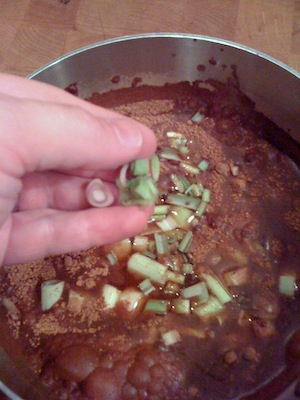 Chop the lemongrass with a sharp knife and add it to a sauce pot. Zest your orange, lemon and lime. We use a Microplane Grater/Zester to remove the colored peel from the citrus, avoiding the white pith. Measure out all of the other ingredients except the agave nectar and add them to the pot. The agave is added at the end after filtering. Once you are stirring your tonic over the stove, you’ll have to push the ingredients so that all of the cinchona powder goes under. You are basically making an herbal-citrus tea at this point. After twenty minutes or so, it’s time to filter out the solids.
Chop the lemongrass with a sharp knife and add it to a sauce pot. Zest your orange, lemon and lime. We use a Microplane Grater/Zester to remove the colored peel from the citrus, avoiding the white pith. Measure out all of the other ingredients except the agave nectar and add them to the pot. The agave is added at the end after filtering. Once you are stirring your tonic over the stove, you’ll have to push the ingredients so that all of the cinchona powder goes under. You are basically making an herbal-citrus tea at this point. After twenty minutes or so, it’s time to filter out the solids.
The powder is so fine that filtering is an exercise in patience, but the better job you do, the clearer your tonic will become. In the end, your tonic will be brown in color. That’s unavoidable, but we think it’s a nice indicator that a cocktail is made with a delicious craft tonic. Careful filtration will also prevent sediment from forming at the bottom of the bottle and in your cocktails. We like to use a fine mesh strainer first, then do several rounds of paper towels before finishing with a coffee filter. Believe us, doing several passes this way saves a lot of time. If you go directly to a coffee filter, you will be waiting for hours, as the powder quickly clogs the paper. (If you accidentally added the agave too early, you can still save your tonic, but filtering will take a long time—best to setup several filters and let it go overnight!)
Once filtered, clean your sauce pot and pour the filtered extract back into it. Now, add your agave nectar over medium heat to combine. You can use either the light or dark agave. We’ve tried both and like the dark agave better, although this will also deepen the color of your tonic. Once combined, remove from heat and bottle.
The Best Gin & Tonic You’ve Ever Had
1.5 oz gin
.75 oz tonic
2 oz soda waterAdd gin and tonic to a glass. Fill with ice and top with club soda, seltzer or sparkling mineral water. Garnish with a lime wedge.
Make A Cocktail
We are sure you will agree that a cocktail made with your own tonic is a revelation in flavor. While not completely unusual, the refreshing yet familiar flavor combination in a craft Gin & Tonic will make you wonder why this isn’t the standard. You can find house tonic in bars like the Strip Club, but it’s not very common. Don’t stop with gin. Try making a vodka tonic to really taste the flavor of your achievement. Also, don’t be afraid to experiment with your tonic ingredients. We’ve read about successful examples that include other spices such as clove and cardamum and adjustments such as doubling or tripling the orange zest, or dropping one or more of the other citrus fruits. Delicious tonic like this will help you appreciate the bitter spectrum of flavors, if you don’t already enjoy them. Even if you don’t like gin, or you think you hate Gin & Tonic, you really don’t know what you have been missing. Before long, you may be drinking other bitter cocktails such as a Negroni, or perhaps Campari on the rocks!
From The Shop:
Recommended:
You Might Also Like:
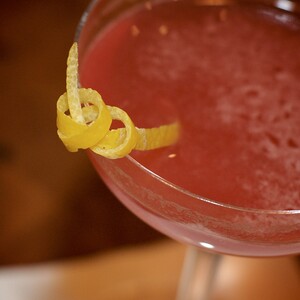
The Scofflaw
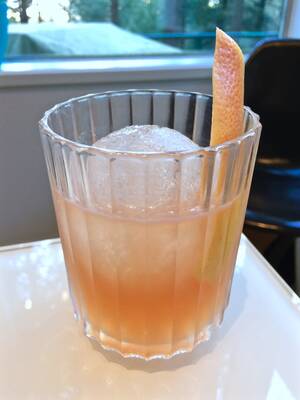
Bicycles & Baskets
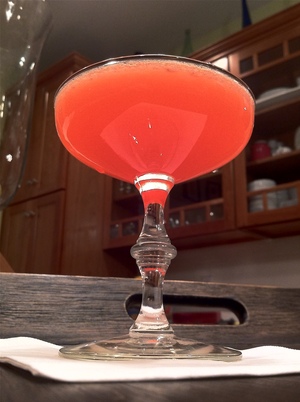
Paper Airplane
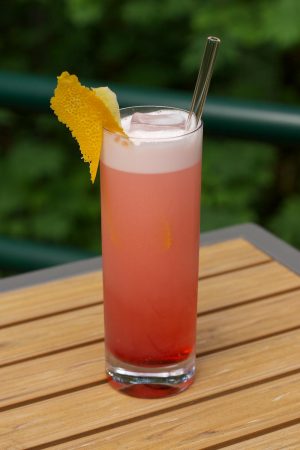
One Flight Up

Basil Oil Garnish
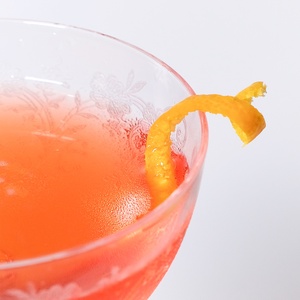
Fogerty
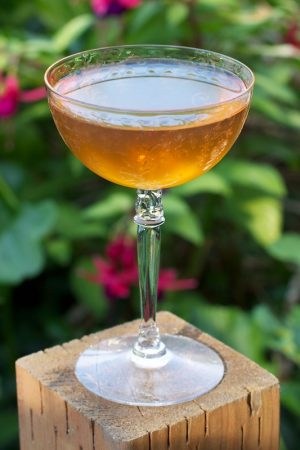
Bensonhurst
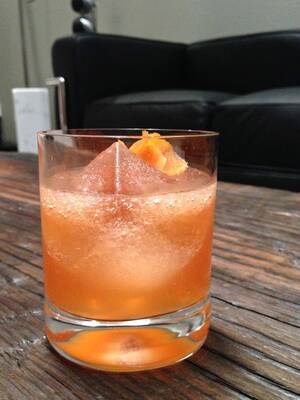
Church
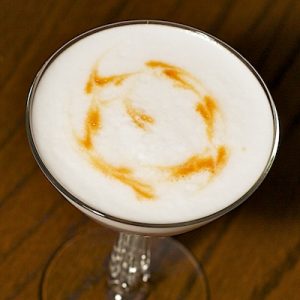
Iron Cross
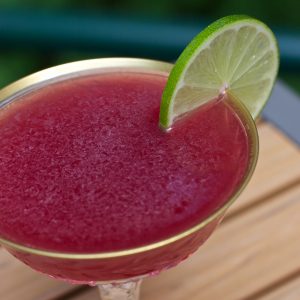
Sea of Cortez

Red Pepper Daisy
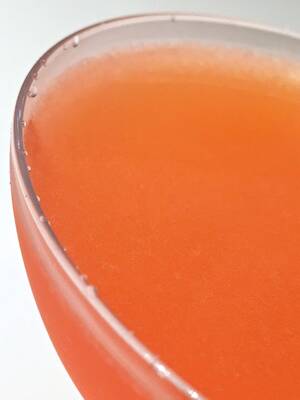
Naked and Famous

Drink with No Name: The Harrington
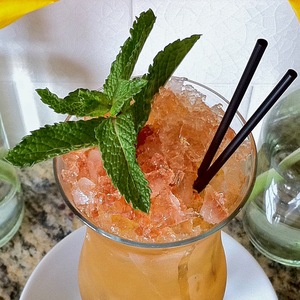
Queen’s Park Swizzle
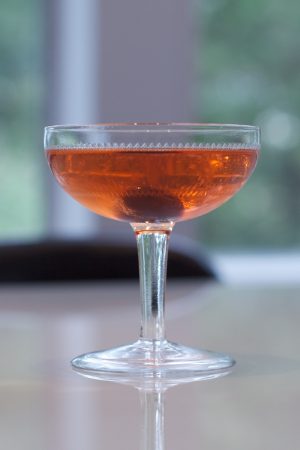
Metropole
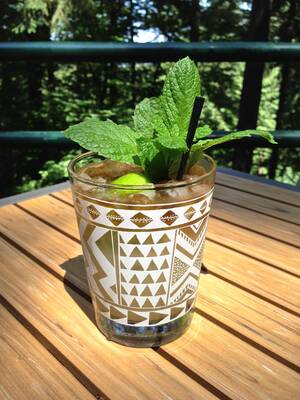
Mai Tai

Breakfast Collins
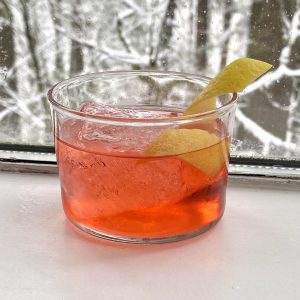
Jalisco Stroll
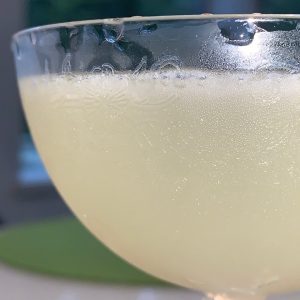
Vieux Mot
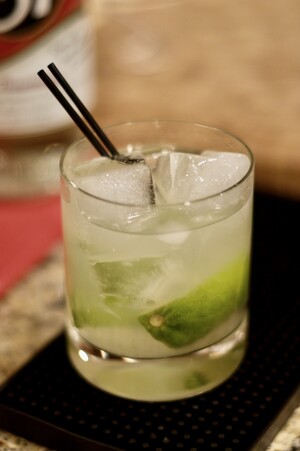
Caipirinha

Grounded For Life
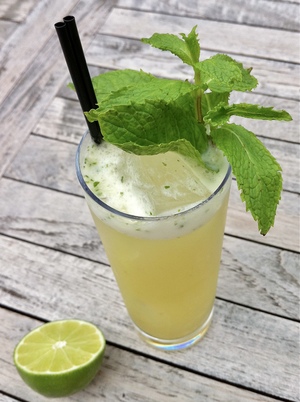
Gin Gin Mule
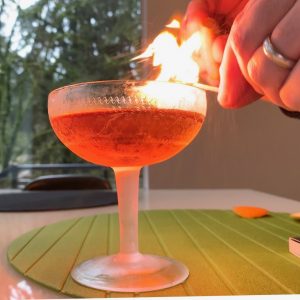
Jaguar
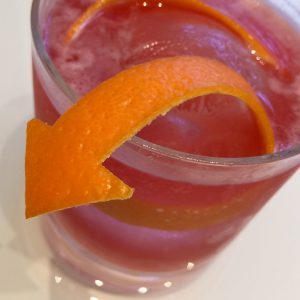
Turn Signal
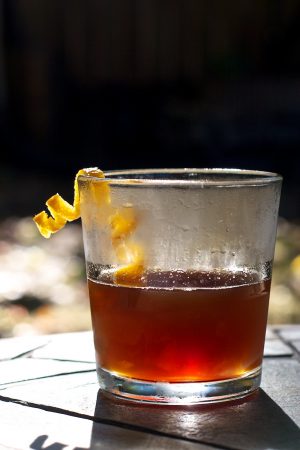
Bitter Branch

Suffering Bastard
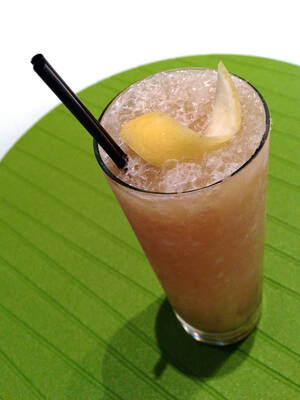
St. Stephen’s Sour
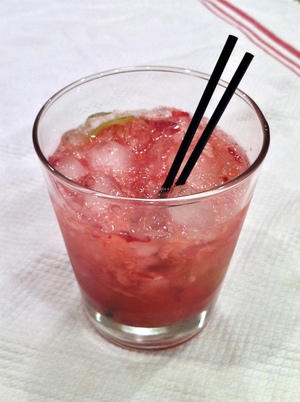
Cherry Caiprissima

Fernelderwood
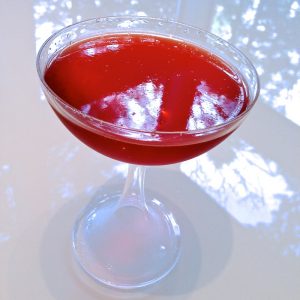
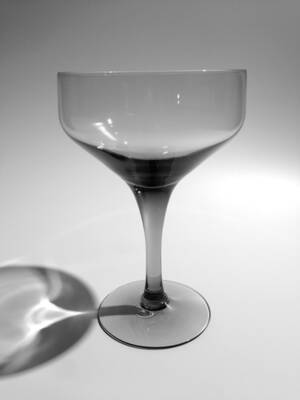




I would like to make my own tonic water, and during a discussion the question came up about substituting bitters or other more readily available ingredients for the Cinchona.
I’ve done some searching on the web but can’t find any such recipes. Anyone here tried this?
Bob, The problem, as I see it, with substituting bitters, for example, is that bitters have their own flavor besides the components that make them bitter. Certainly, some cocktail bitters use cinchona, gentian, and other bitter botanicals, but they also contain other flavors that are very strong. Cloves, cinnamon, nutmeg, burnt sugar–depending on the bitters you had in mind, these are flavors you may not want in your tonic. Let’s face it, cocktail bitters are not about bittering anyway, they are about adding intense flavor. The bitterness is really just a byproduct and more often, a requirement so that they… Read more »
You can order powdered cinchona online, if you don’t have it in your area. Trying to substitute bitters would be a car crash.
Alternative tonics could be cool, though. Gentian tonic? Wormwood tonic? Oo.
a couple of years ago I wanted to address the lack of bitterness for G&Ts. My plan was to soak the cinchona bark in the GIN. I forgot about it and by the time I went back, it looked like Iodine. my physician wife wouldn’t let me drink it. there’s still a stain on the bar where I spilled some. I’ll try this ASAP!
Claydesta, what you made was a cinchona tincture very similar to how a lot of folks are making their own cocktail bitters. Depending on the extraction, you might have been able to put it into little bottles and used it in dashes for drinks. Interesting experiment!
Old post, I know, but how long will the tonic syrup last before it goes bad? I ask because I’m wanting to make some as a flavoring for eliquid.
Any help would be greatly appreciated.
I have some that has lasted a year, but that’s very unusual in my experience. It often gets molldy within a month or two. Probably depends on how clean your bottle is and how often you use it.
Did you ever test your tonic water under a black light to see if it fluoresced?
Andrew, I happen to have a near UV flashlight which is basically a blacklight. I just tested my current tonic and it does indeed fluoresce as you might expect. The tonic I have today is a bit different than this recipe since I made the updated version from Jeffrey Morgenthaler’s new book which uses a tincture, but it’s basically the same result in terms of quinine. So, yeah, I’d have to say it works! Were you thinking it wouldn’t?
No, I was thinking (hoping) it would, but I wasn’t sure if the stuff right from the bark would work. I know quinine is not soluble in water but I’ve read it is quite soluble in ethanol. I’ve got some quinine sulfate diluted in sulfuric acid that I was doing some lab testing (with and UV LEDs) and was fantasizing using quinine in my beer (I’m a home brewer). I think the flavor might work in an IPA, but I need to get the bark powder from Amazon to test the idea.
Thanks for testing this for me.
That sounds really interesting! One thing I will say is that the effect isn’t as cool with a brown liquid as it is with commercial tonic that is chemically pure and totally clear. The florescent effect ends up looking a little bit like a shadowy haze rather than something from science fiction.
Ah… well, it might work well in a light pilsener? E.g., if you you added it to a bud light what do you think the effect would be?
Also, I’ve got a friend who owns a distillery (just opening it now). Might work well in distilled spirits that by design are clear.
My point is that whether you make a tonic syrup or a tincture, using cinchona bark you will definitely extract quinine, but because of the natural source you also get color like tea, and any way you mix it will tint the liquid. For example, tonic syrup plus 3 parts sparkling water is light brown. Add some brown tincture to water and the browning is pretty minor, but it’s there. You might not notice the color in something that is already brown. I know what a Czech pilsner is, but what is a bud light? Is that some kind of… Read more »
One water premium tonic with syrup agave, its great. Te name Brnas QuinaVa.
The first water tonic premium mexican, made in Mexico with 100% ingredients natural.
You must to test.
Regards
Memo Vidal
I’m researching tonic syrups for an article I’m writing, and wondering what your suggestion is for the proportions of cinchona bark (I have the bark, not powder) to vodka for an extraction?
Thanks!
I use Morgenthaler’s updated recipe from his Bar Book almost exclusively now, and that method leverages a quinine tincture–so I think you are following a good path! He uses 6 grams of powdered bark in 150 ml of vodka. I have made this many times now and extraction is very fast. You can literally stir in the powder, then begin a straining process immediately which can take a hour. This yields a tincture that can be used for several batches which also include Ceylon cinnamon, gentian root, citrus peel, citric acid, sugar and water. Check out the excellent book for… Read more »